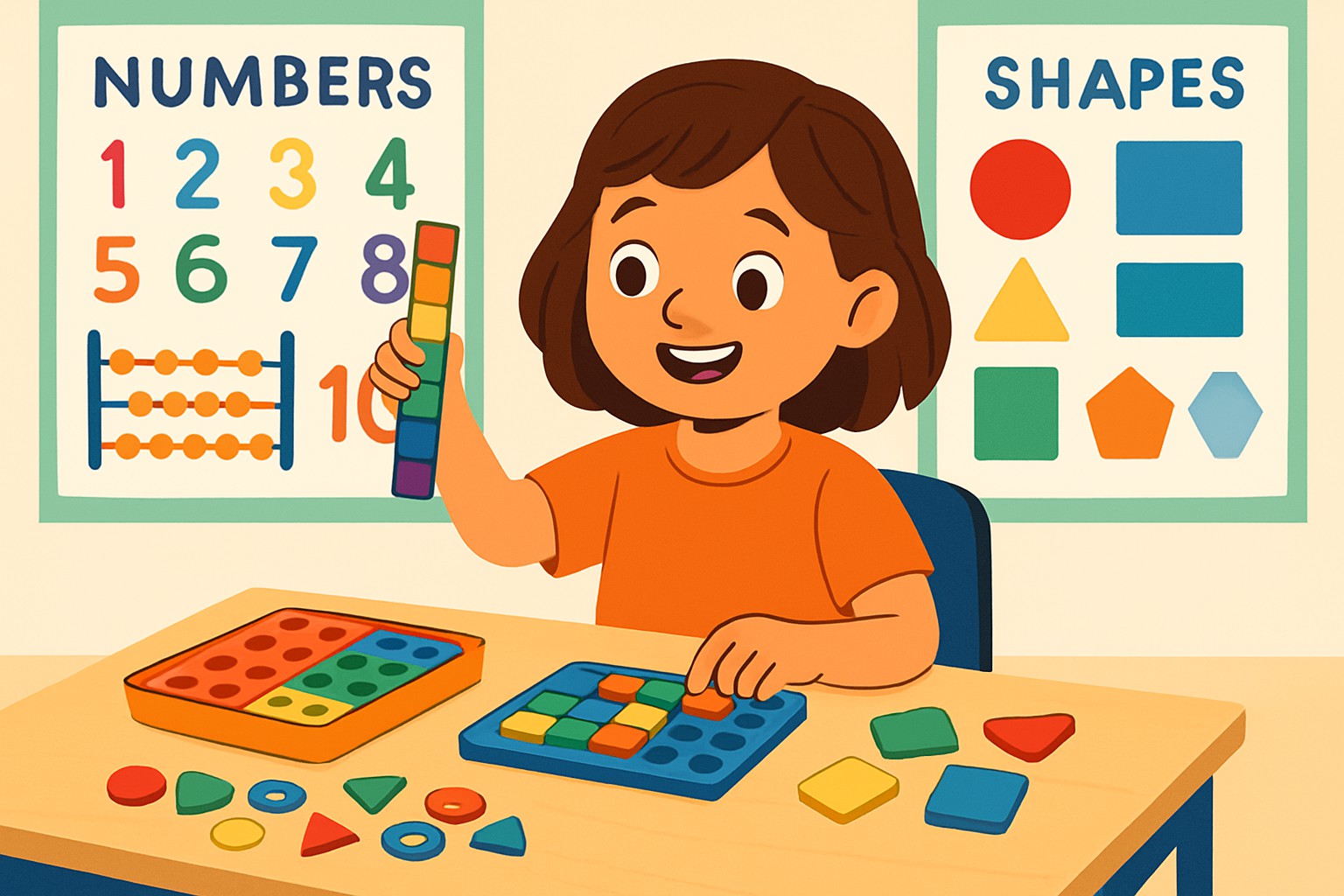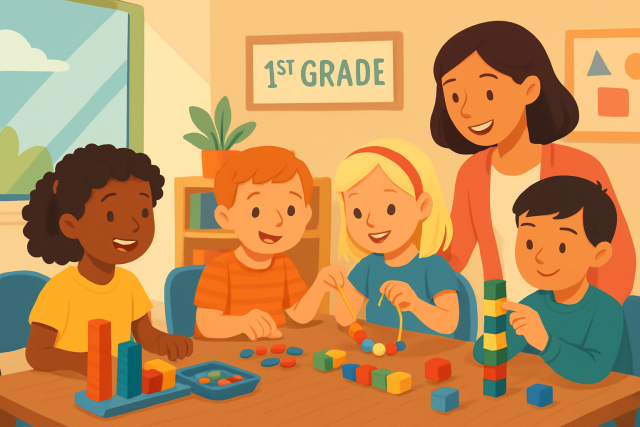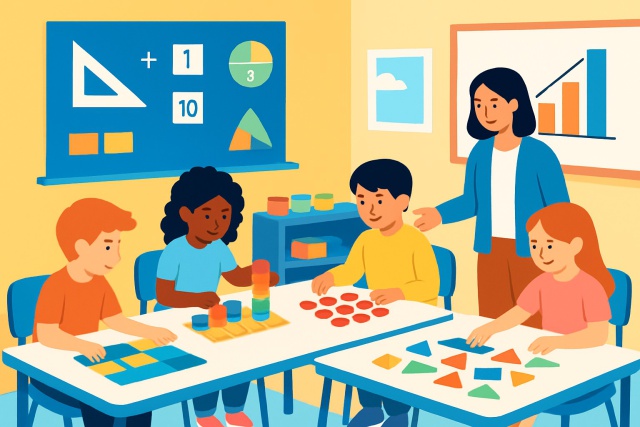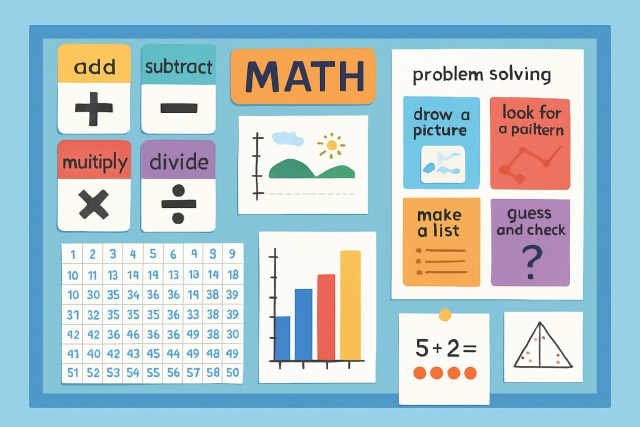Everyday Math - 2nd Grade Strategies Your Child Needs

Everyday math is a big deal for 2nd graders, helping them build those basic skills and boost their confidence with numbers. Around this age, kids begin to connect what they’re learning in class to real-life moments—like counting coins jingling in their pockets or glancing at the clock to see what time it is. Getting them to practice math in everyday life really nails down those key arithmetic concepts and gives a nice boost to their problem-solving chops. Mixing hands-on activities with the usual lessons keeps them curious and engaged.
Getting to Know Everyday Math in 2nd Grade The Fun and Sometimes Surprising Journey
Everyday math in 2nd grade is about building a rock-solid number sense and getting kids comfortable with addition and subtraction up to 100. They also work on place value, simple geometry, and concepts like telling time and handling money. These skills build on what they started in 1st grade.
- Building number sense by counting, comparing and getting cozy with numbers
- Using addition and subtraction strategies to tackle problems up to 100
- Grasping place value for ones, tens and hundreds which is surprisingly handy
- Measuring length and getting to know different units of measurement—more fun than you might think
- Telling time to the nearest 5 minutes on analog clocks like a pro
- Counting and identifying coins and bills through money-related activities that bring math to life
- Recognizing and describing 2D and 3D shapes and spotting patterns that sneak into everyday life
- Working on word problems to put math skills into practical real-world action
Essential Math Strategies Every Kid Should Have Up Their Sleeve
Helping 2nd graders tackle everyday math usually calls for thoughtful strategies that build their understanding step by step while keeping them engaged through multiple senses. I’ve found the best learning involves a fun mix of visual aids, hands-on materials and real-life practice. Think of it as connecting math to little moments in their daily lives.
Use visual tools like number charts, base-10 blocks and shape models to help bring abstract ideas down to earth where they feel less like puzzles and more like clues.
Practice mental math daily to steadily boost both speed and accuracy. A little effort each day really does add up.
Encourage estimation to sharpen number sense and give problem-solving skills a nice workout.
Tie math lessons to everyday activities like shopping or cooking to highlight how handy these skills are in real life.
Encourage problem-solving by asking open-ended questions that get the brain gears turning and stretch thinking beyond the usual.
Mix math games and interactive exercises to keep learners on their toes and help those concepts stick like glue.
Developing Number Sense and Really Getting to Grips with Place Value
To help your child get a solid grip on number sense and place value, try grouping numbers in clear meaningful chunks like ones, tens and hundreds. It’s amazing how showing kids that numbers can be broken down and pieced back together helps them work with numbers more flexibly and makes addition and subtraction click more naturally.
- Use base-10 blocks to visually represent ones, tens and hundreds. It’s like giving numbers a little hands-on life
- Introduce number charts to help spot patterns and connections because they’re great for lightbulb moments when things just click
- Teach how to break numbers into parts to make calculations a breeze. This helps make math feel less like a puzzle and more like a game
- Connect numbers to everyday items like counting toys or snacks so math doesn’t stay stuck on the page but jumps into real life
- Practice expanded form to build a rock-solid understanding of place value and lay the groundwork for bigger math adventures ahead
Getting Comfortable with Addition and Subtraction
Let's ease into addition and subtraction like old friends—nothing too scary, just the basics that get you through everyday number crunching. You’ve probably been adding and taking away since forever, but here’s a gentle refresher to make those skills feel second nature again.
Teaching addition and subtraction within 100 usually involves regrouping and borrowing in ways that kids can actually see and understand. I’ve found that using hands-on methods like number lines, counting strategies and number bonds not only makes the math click but also helps children grasp the reasoning behind it.
- Use number bonds to see how numbers cozy up together and then break apart like familiar dance partners
- Dive into fact families to get a solid grasp of how addition and subtraction facts work together
- Use number lines to hop forward or backward, making problem-solving feel like a stroll down memory lane
- Practice counting on and counting back in your head to pick up speed; it gets smoother with practice
- Break numbers into tens and ones to simplify calculations and give your brain a breather
Exploring Time, Money, and Measurement with a Quick Dive into What Really Counts
By 2nd grade most kids usually have a handle on telling time to the nearest five minutes. They’re also diving into counting coins and bills and measuring length using standard units like inches and centimeters plus some non-standard ones like paper clips or blocks. This always keeps things a bit more interesting.
| Concept | Tools Needed | Example Activities | Tips for Parents |
|---|---|---|---|
| Telling Time | Analog clocks, timers | Practice setting clocks to different times — it’s like teaching your child to read a new language | Use real clocks and sneak time-telling into everyday moments to keep it natural and fun |
| Counting Money | Play coins and bills | Set up a pretend store and have fun practicing making change — kids love playing shopkeeper! | Use actual money when you can, and try tying lessons to real shopping trips to make it click |
| Measurement | Rulers, measuring tapes, non-standard units | Measure all sorts of things around the house; it can turn into a little adventure | Encourage guessing before measuring, which adds a fun challenge and keeps curiosity alive |
Taking a Closer Look at Shapes, Patterns, and the Basics of Geometry
It’s key to help kids spot and talk about 2D and 3D shapes, recognize and create patterns, and sharpen their spatial reasoning skills along the way.
- Take a good look at the properties of shapes like counting their sides and vertices—it’s more interesting than it sounds
- Explore symmetry by folding and drawing which often feels like creative magic
- Spot and create repeating and growing pattern sequences that turn math into a fun puzzle
- Dive into spatial awareness activities such as puzzles and building blocks—these hands-on tasks help things click in your mind
Helpful Tips for Parents to Support Daily Math Learning (Because Every Little Bit Counts)
Parents play a key role in boosting daily math skills by keeping steady routines and sparking kids’ curiosity. They also create a supportive space brimming with math opportunities.
Find a daily time for math practice that fits smoothly into your routine without any hassle.
Use real-life examples like measuring ingredients while cooking or calculating prices when shopping to help make those concepts clearer.
Encourage your child to ask lots of questions and try different problem-solving methods because mistakes are just part of learning.
Make math fun by incorporating it into playtime with games and hands-on activities related to everyday situations.
Focus on celebrating effort and progress instead of just correct answers since building confidence is key.
Keep a supportive watch on how well your child is understanding the material and don’t hesitate to get extra help if they’re struggling frequently.
Engaging Everyday Math Activities and Resources That Really Click
Using interactive games and apps with hands-on worksheets specially crafted for 2nd grade math really helps kids reinforce the concepts they have picked up while keeping their motivation in check. When activities strike the sweet spot between fun and focused practice, they build essential skills through playful discovery and exploration
- Math board games that make practicing addition, subtraction and money skills feel less like work and more like play
- Interactive apps designed for 2nd grade learning standards that keep kids engaged without overwhelming them
- Printable worksheets that offer hands-on practice with place value and problem solving because sometimes you just need to get your hands dirty with numbers
- Cooking activities that sneak in measuring ingredients and counting and turn the kitchen into a mini math lab
- Outdoor scavenger hunts that bring counting, shapes and pattern recognition to life and make learning an adventure rather than a chore
Evaluating Your Progress and Knowing When It’s Time to Seek a Little Extra Help
Parents can keep a close eye on their child's math progress by tuning into daily practice sessions and staying on top of homework. They can also chat through tricky concepts to catch both the wins and the stumbles.
- Struggles to recall basic addition and subtraction facts like they’re playing hide and seek with numbers
- Frequently gets tangled up in place value and how numbers are grouped, which can feel like trying to read a foreign language
- Finds word problems especially tricky to crack as if the words and numbers just do not want to cooperate
- Often shows clear signs of frustration or would rather dodge math tasks altogether—who can blame them sometimes
- Appears pretty disconnected or not all that interested in learning math which makes it tough to stay engaged
Conclusion Building Up Confidence with Everyday Math One Step at a Time
Using these everyday math 2nd grade strategies really helps 2nd graders lay down a rock-solid foundation in math while also nurturing a can-do attitude.






